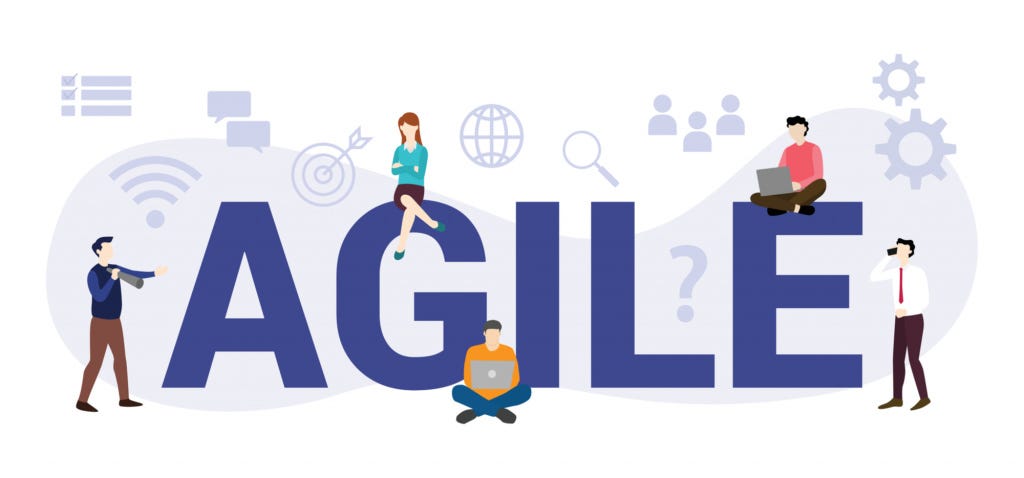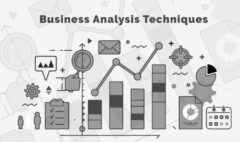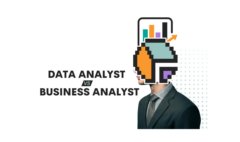Real World Application of Agile Business Analysis Modelling
In today’s rapidly changing business environment, the traditional methods of project management and development often fail to deliver the desired outcomes.
Agile methodology has emerged as a saving grace for many organizations aiming for effective project management and product development.
But the Agile approach isn’t just beneficial for project managers and developers; it holds tremendous value for business analysts as well.
This is where Agile Business Analysis Modelling comes into play.
What is Agile Business Analysis Modelling?

Agile Business Analysis Modelling (ABAM) is a modern methodology that fuses the flexibility and collaboration intrinsic to Agile frameworks with the structured, analytical rigor of traditional business analysis.
This synergy creates a dynamic environment where change isn’t just tolerated—it’s expected and leveraged for continuous improvement.
In traditional business analysis, the focus is often on extensive planning, detailed requirement documents, and little tolerance for changes once the project starts.
In contrast, Agile Business Analysis Modelling encourages ongoing stakeholder feedback and iterative development.
It accommodates the reality that business needs and environments can and will change, often rapidly.
Key Principles of Agile Business Analysis Modelling:
- Iterative Development: Requirements are expected to evolve. The project is broken down into small, manageable pieces known as ‘sprints’ or ‘iterations’.
- Collaboration: Cross-functional teams work together in close quarters to encourage real-time communication and collaborative problem-solving.
- Customer-Centric: Agile BA Modelling places a high value on customer satisfaction. Feedback is continuously sought to make adjustments to the project requirements and outcomes.
- Adaptability: The framework is designed to quickly adapt to changes, be it in market conditions, customer needs, or technological advancements.
Real-World Application of Agile Business Analysis Modelling

Consider a SaaS (Software as a Service) company planning to launch a new feature aimed at automating customer service.
The traditional approach would involve spending several months on comprehensive market research, creating detailed specification documents, and then moving into a development phase where changes would be minimal and difficult.
In contrast, by applying Agile Business Analysis Modelling, the team would start with a basic understanding of what the feature needs to achieve.
They would then develop a ‘minimum viable product’ (MVP) and release it to a small customer segment. Feedback from this release would inform what the next set of requirements should be.
The Business Analyst works closely with product managers, developers, and even customers, iterating on the feature throughout its development.
Through multiple feedback loops and iterations, they can adapt to changing customer needs or technological constraints.
Unpacking the Benefits of Agile Business Analysis Modelling

Agile Business Analysis Modelling (ABAM) is not just another buzzword in the industry; it’s a practical approach that brings tangible benefits to businesses, especially in today’s volatile market landscape.
From start-ups to global enterprises, organizations are realizing the effectiveness of this hybrid model in navigating complexity, fostering innovation, and delivering value.
Let’s delve into the key advantages.
1. Faster Response to Market Changes
One of the core tenets of Agile Business Analysis Modelling is its nimbleness in responding to shifts in market trends.
Given that customer preferences, technological advancements, and even geopolitical circumstances can dramatically alter the business landscape, an agile approach allows organizations to pivot more easily.
Real-World Example:
Imagine a mobile app development company that initially planned to focus on gaming apps.
However, during the course of development, a significant rise in demand for health and wellness apps occurs.
Through Agile Business Analysis Modelling, the company can quickly reassess its priorities and shift its focus to meet the new market demand, without derailing the entire project.
2. Enhanced Collaboration
This framework encourages teamwork and interaction among cross-functional teams.
It breaks down the silos that often exist between departments, enhancing communication and facilitating a more collaborative work environment.
This, in turn, leads to better problem-solving and more innovative solutions.
Real-World Example:
Consider an e-commerce business looking to improve its recommendation engine.
Through Agile Business Analysis Modelling, data scientists, UI/UX designers, business analysts, and marketing teams can collaborate efficiently.
The data team might identify patterns, while the marketing team understands customer behaviour.
The collaborative efforts result in a recommendation engine that is not only technically sound but also maximizes customer engagement.
3. Higher Customer Satisfaction Rates
The iterative development and continuous feedback loops that are central to Agile Business Analysis Modelling ensure that the end product is highly aligned with customer needs and preferences.
It provides the opportunity to make course corrections based on real user feedback, thereby increasing the chances of delivering a product that resonates with your audience.
Real-World Example:
A software company developing a project management tool could release a Minimum Viable Product (MVP) to a segment of its target audience.
Continuous feedback is gathered, analysed, and incorporated into subsequent development sprints, ensuring that the tool becomes more refined and better aligned with users’ actual needs over time.
4. Alignment with Stakeholder Expectations
Business Analysis Modelling in an agile framework aligns the development process closely with stakeholder expectations.
By involving stakeholders in regular reviews, their insights can be integrated into the development process, ensuring that the project stays relevant and valuable from start to finish.
Real-World Example:
In a smart city project where a municipality aims to integrate IoT devices to monitor and manage public utilities, stakeholders could range from government officials to the general public
Utilizing Agile Business Analysis Modelling, periodic reviews can include these diverse perspectives to ensure the system meets regulatory compliance, solves actual civic issues, and gains public approval.
In the realm of business analysis, the methodology employed often determines the project’s trajectory.
One such approach that has been gaining traction, especially in the dynamic environment of modern businesses, is Agile Business Analysis Modelling (ABAM).
It amalgamates agile principles with business analysis, ensuring rapid adaptation and precise modelling to cater to changing requirements.
However, what makes Agile Business Analysis Modelling truly effective are the tools and techniques at the analyst’s disposal.
Essential Tools and Techniques

Let’s explore some of these essential tools and techniques in-depth, along with real-world examples to provide a practical perspective.
1. User Story
In the Agile Business Analysis Modelling (ABAM) ecosystem, one technique that proves to be incredibly effective is the use of User Stories.
This seemingly simple approach packs a punch when it comes to eliciting requirements in a way that keeps the focus squarely on the user’s needs.
It offers a user-centered paradigm, guiding the development process to yield features that are not just technically sound but also genuinely useful to the end-user.
A user story provides a brief, clear, and focused description of a feature, articulated from the perspective of the user.
This user-centric format serves to remind everyone—from developers to business analysts—that the ultimate goal is to provide value to the user. User stories are typically structured as follows:
“As a [type of user], I want [an action or feature] so that [benefit/value].”
This formula serves to incorporate the user’s viewpoint, clarify the feature or action needed, and outline the perceived benefit.
Real-World Application: A Case Study in the Travel Industry
Consider a hypothetical real-world scenario involving an online travel booking platform that wants to improve its mobile application.
Let’s say the company gathers required feedback from various channels, including social media, customer surveys, and direct feedback within the app.
They discover that a recurring pain point among frequent travellers is the inability to easily compare flight prices across multiple dates. To address this need, they create a user story that looks something like this:
“As a frequent traveller, I want to compare flight prices for multiple dates so that I can choose the most cost-effective option.”
This user story acts as a guidepost for both the development and business analysis teams involved in enhancing the mobile application.
Following Agile Business Analysis Modelling principles, the team would:
- Incorporate the User Story into the Backlog: The user story would be added to the product backlog, to be prioritized among other user stories and features.
- Prioritise and Estimate: During a backlog refinement session, the team would prioritize this user story and provide an effort estimate, so it can be planned for an upcoming sprint.
- Develop and Test: Once the sprint starts, the development team will work on implementing this feature. User story acceptance criteria would guide the development.
- Review with Stakeholders: After development and initial testing, the feature would be reviewed with stakeholders (possibly including real users) to ensure it meets the desired objectives.
- Iterate: Depending on feedback, the feature might be adjusted in future sprints.
- Measure and Validate: Post-implementation, analytics tools could measure how often users engage with this new feature and whether it has affected overall user satisfaction and engagement.
By using Agile Business Analysis Modelling and focusing on user stories, the travel platform can quickly and efficiently respond to real user needs, keeping their product competitive and their users happy.
The example above not only demonstrates the relevance of user stories but also shows how they fit into a larger Agile Business Analysis Modelling framework.
With a keen focus on the end-user, this approach yields solutions that are both agile and robust, effectively meeting today’s ever-evolving business challenges.
2. Use Case Modelling
Use Case Modelling serves as one of the most instrumental tools in Business Analysis Modelling (BAM).
The utility of Use Case Modelling lies in its effectiveness for understanding the complex relationship between the users and the system, particularly focusing on what the user wants to achieve with the system.
This tool, unlike some others, doesn’t go into the nitty-gritty of system behaviour but rather provides an outline of the goals that the users want to achieve with the system.
In Business Analysis Modelling, Use Case Modelling offers a high-level view of the user-system interaction.
It creates a blueprint of the functional aspects of a system from the user’s perspective.
A “use case” is a description of how a user might perform a specific task or achieve a particular goal using the system in question.
The use case illustrates the steps and the sequence of interactions between the user and the system but does not delve into the internal algorithms or data processing aspects of the system.
Real-World Application: Online Banking System
Let’s consider a real-world example involving an online banking system to further illustrate the role of Use Case Modelling in Business Analysis Modelling.
Assume that the bank is looking to overhaul its existing online platform to make it more user-friendly.
One of the critical use cases identified could be a customer wanting to transfer money from their account to another account within the same bank.
The use case might be defined as follows:
Use Case: Money Transfer Between Accounts
Actor: Customer
Preconditions: Customer is logged in, and sufficient funds are available.
Basic Flow:
- Customer selects the “Transfer Money” option.
- Customer chooses the “Between Own Accounts” option.
- Customer selects the source and destination accounts.
- Customer enters the amount to be transferred.
- Customer reviews the details and confirms the transfer.
- Customer receives a confirmation message.
Postconditions: Money is transferred, and accounts are updated accordingly.
This use case sets the stage for understanding the user’s goals without going into how the system’s internal processing works to achieve the transfer.
It offers clarity and a common understanding for both the business analysts and the development team.
Here is how the Use Case Modelling can be incorporated into the Business Analysis Modelling framework:
- Identify and Document Use Cases: Business analysts start by identifying potential use cases. These are then documented in a structured format.
- Prioritize Use Cases: Once all the use cases have been identified, the next step is prioritizing them based on business value or other criteria.
- Model the Use Cases: This involves creating use case diagrams or writing detailed use case scenarios, explaining the sequence of actions.
- Stakeholder Review: Business analysts should review the use cases with stakeholders to ensure that they capture all the essential elements and meet the end user’s needs.
- Iterate and Refine: Post-review, business analysts may need to iterate and refine the use cases based on stakeholder feedback.
- Integration into Development Cycle: The finalized use cases are then incorporated into the development process, serving as a guide for the functionality that needs to be built.
Use Case Modelling, as part of Business Analysis Modelling, serves as a powerful tool that enhances clarity and ensures that the software developed aligns closely with user needs.
It is instrumental in translating user objectives into actionable development tasks, thereby facilitating a more focused and effective development process.
3. Backlog Refinement
Agile Business Analysis Modelling thrives on continuous improvement and iteration.
Backlog refinement plays a pivotal role in this by ensuring the backlog items are clear, prioritized, and estimated accurately.
Real-World Application:
In a software development project for a new e-commerce website, the product owner, in conjunction with the team, would regularly review the product backlog.
This could involve breaking down larger tasks into more manageable pieces, re-prioritizing tasks based on changing business needs, or adjusting estimates based on recent learnings.
Conclusion
Agile Business Analysis Modelling is a robust approach that offers adaptability, speed, and accuracy in analysing and solving business challenges.
By integrating Agile principles into business analysis, organizations can create a more responsive and flexible environment that better serves the needs of the project, the team, and ultimately, the customer.
As we continue to navigate the complex landscape of modern business, the role of Agile Business Analysis Modelling will only continue to grow in significance.









